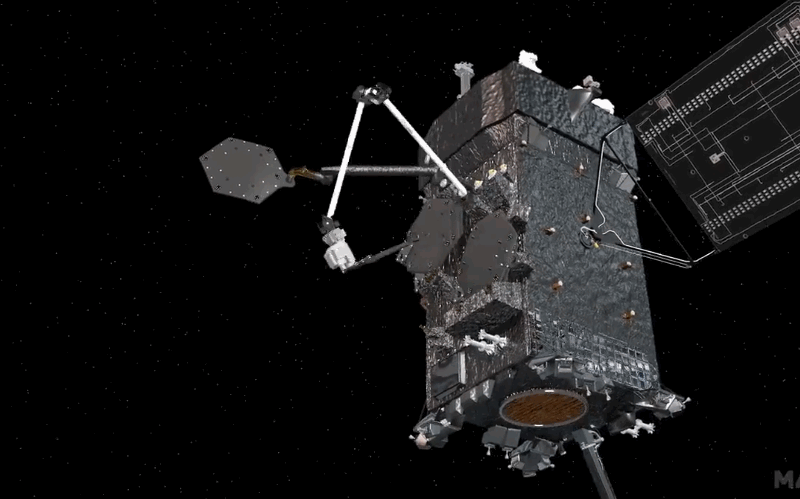[ad_1]
NASA has awarded Maxar an estimated $142 million agreement to exhibit in-orbit spacecraft refueling and assembly of new parts applying a customized robotic platform in house.
The room infrastructure dexterous robotic, or SPIDER, method will be portion of NASA’s Restore-L mission to exhibit automation of proposed orbital responsibilities like reconfiguring or fixing a satellite or manufacturing new factors from scratch.
The initially factor the Restore-L spacecraft will do is demonstrate that it can synchronize with, seize, join with and refuel a satellite in orbit, then launch it into a new orbit. Afterwards the craft will use the Maxar-developed robotic arm to assemble a multi-panel antenna reflector, then take a look at it.

Final, a different piece of hardware, Tethers Unlimited’s MakerSat, will extrude a beam some 10-20 meters very long, which will be inspected by the guardian satellite, then detached and reattached to exhibit its robustness.
“We are continuing America’s world wide leadership in room technologies by proving we can assemble spacecraft with bigger and extra highly effective factors, right after start,” explained NASA’s Jim Reuter in a information submit. “This engineering demonstration will open up a new entire world of in-room robotic abilities.”
There’s no tough timeline for the mission still, but it’s supposed to take off the mid 2020s. This isn’t a smaller-scale experiment that can fly up following week in an Electron — it is a significant, expensive just one that will most likely choose up most of a substantial rocket’s payload.
Though it is only a demonstration, a Maxar agent pointed out that it is pretty near to what would be an operational process on other satellites in the foreseeable future. It has also been beforehand demoed on the floor, however of program that’s no substitute for the serious point.
Robotic arms are a little something of a specialty for Maxar, which has sent 6 whole for NASA, like the 1 on Insight (at the moment on the Pink Earth) and the Mars 2020 Rover (thanks to get its formal, inspirational identify any working day now).
We’ll have Maxar’s head of space robotics onstage at TC Sessions: Robotics + AI in March at UC Berkeley, so be absolutely sure to be part of us there if you’d like to hear extra about the small business of developing space robots.
[ad_2]
Resource backlink